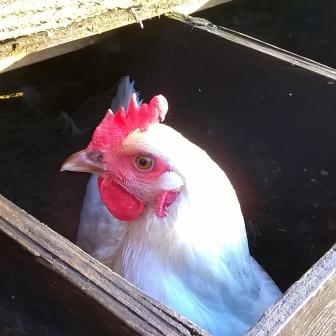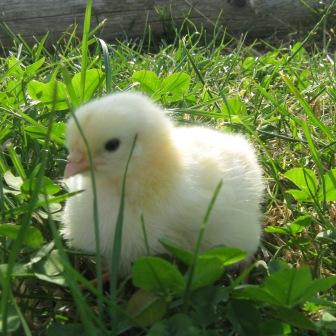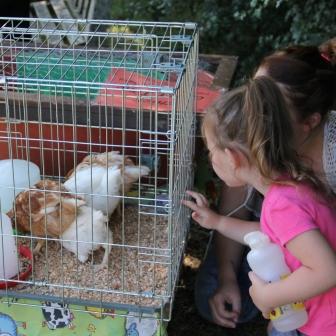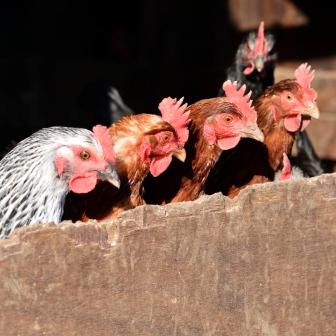Chickens - Point of Lay
Collection ~ from Farmer Gow's by appointment. Your birds will be ready for you on arrival. You are welcome to ask any questions.
Delivery ~ We don't generally offer a delivery service for chickens. In unusual circumstances, we can make exceptions and deliver in the local area. Please do contact us on - 07714 455 400.
Availability
Point of Lay (POL) Chickens
- Gentle, friendly chickens, easy to handle
- Available throughout the year
- Excellent layers - 250-300 eggs a year. Our chickens lay throughout the year, daily during the spring and summer
- Cost - pullets from £13.50 each
- Cost - 'point of lay' from £25 each
Breeds ~ Beechwood Blue, Cheshire Blue (blue egg layer), Calder Ranger, Copper Black Marran, Sussex Ranger, Lohmann, Pied Ranger, Rhode Rock, Speckledy, White Star.
Vaccinations ~ All birds are vaccinated against – Mareks Disease, Coccidiosis, IBD (Gumbro), Infectious Bronchitis, Infectious Laryngotracheitis, ART (TRT), Epidemic Tremors, IB/ND/EDS Oil based, Salmonella, Wormed and Newcastle Disease.
A booster injection is given at 16 weeks to immunise the chickens against Mycoplasma gallisepticum.
Chicken feed
- Feeds - Heygates layers & growers pellets
- Grit - layers, growers and oyster shell
Chicken & Fowl Workshops
If you would like to learn a bit about keeping chickens, before you buy your first birds, why not join us on one of our friendly farm workshops – further details.
Buying Chickens
Questions/Queries - 01793 780 555 or 07714 455 400.
Please order online. On receipt of your order, Dale will phone you to agree a convenient day/date and time for collection.
Collection - generally in the late afternoon (from 3.30pm). When you reach home, your chickens home will be thinking about roosting for the night. They will therefore settle in your chicken house just that little bit better than if moved earlier in the day.
Settling your birds in at home – here are a few pointers for those with existing birds
Stress is a key consideration when settling your birds at home. We suggest the following are taken into consideration
* Feed and Water - two separate feed & water stations, located in different areas within your chicken coop, so that the new birds can feed and water from a different location than your existing flock. This should minimise stress to both the new and existing birds. If there is no competition for food or water, the birds will feel more relaxed whilst getting to know one another.
* Human Contact - keep human presence to a minimum for at least a week - new birds will find you an added pressure - so let them get used to their new environment / home without the added pressure of your close attention. After a week, if they seem settled, contact with humans can be gradually introduced
* Diet - a change of diet can also cause stress - consider using the same feed as they are used to, at least initially. If you prefer a different brand going forwards gradually mix our feed with your feed so that the transition is gradual.




Domestic Poultry Keeping ~ Produced by MJ Hodgkins
The domestic poultry of today are usually ‘hybrids’ which are bred for their ability to convert food into eggs more economically than their pure-bred ancestors.
Providing a few simple requirements are adhered to, the beginner should nave no trouble in obtaining 75-80% production for many months.
Environment
It is undoubtedly better to give poultry as much room as possible. If the house or run space, or both, is too confined this can quickly lead to boredom, bullying, feather pecking, egg eating etc.
For 6 birds, we suggest a minimum house size of 4’ x 4’ (1.21m x 1.21m) plus an outside run of approximately 50 ft2 (4.65 m2). This run will invariably become muddy and, if a permanency, should be covered with gravel or regularly strawed. If the house is of sufficient size the birds can remain in during very wet weather.
The floor of the house should be well littered with wood shavings, straw or some friable material to make for easy cleaning. Hay should not be used except to line next boxes. A perch should be provided 18”-2’ (46-60 cm) above the floor, allowing about 9” (23cm) width per bird.
Nest boxes approximately 10-12” (25-30 cm) square and raised above floor level should be provided in the ratio of one to every 3/4 birds. These should be situated in the darkest part of the house where there is no direct sunlight.
Food
The most essential point here is not to waste food which means using the correct sort of feeder, preferably a hanging tube type, not an open trough. For maximum production birds should be fed ad lib on layers mash or pellets 100-130 gms (3.5-4.5 oz) per bird per day. If any corn is fed, not more that 14 gms (½ oz) per bird per day. All feeding should be done inside the house.
Water & Grit
As an egg is made up of about 65% water it is most essential that the birds have fresh water in front of them at all times.
Birds also need access regularly to mixed grit, sharp flint for digestion and oyster shell for extra calcium.
- Never underestimate the fox. Without any doubt this is most likely to be your biggest problem.
- If you have a sudden drop in egg production in spring or summer house infestation with red mite is the most probable reason. This can be easily remedied with a spray or powder.
- Unexplained deaths of birds in good condition is more likely to be vent pecking than any other cause. This can be difficult to spot without a very close examination and is usually caused by stress factor i.e. mud, shortage or food or water, or light intensity wrong inside the house.
- Poultry must not have access to lettuce, rhubarb, daffodils, laburnum, yew or green potatoes.
Where is Farmer Gow's ~
Just 1 mile from the A420 ( Oxford ~ Swindon ) on the B4508 between Longcot and Fernham villages. Easy to find us if you are coming from Oxford, Swindon, Wantage, Witney, Abingdon, Cirencester and Marlborough. Just search on google maps for 'Farmer Gow's'.
Free range eggs (straight from our chicken houses) are available daily in the farm shop. Being so fresh our eggs will comfortably last 6 weeks, although we can only tell you they are good for 28 days.
How to find us
How to find us
We're just off the A420
(Oxford-Swindon) on the B4508 between Fernham and Longcot villages.
Sat Nav
Sat Nav
Use coordinates
51.61868 -1.59398
rather than our postcode.
what3words
what3words
///toasters.leopard.bill

